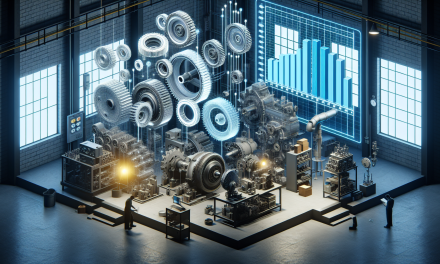Table of Contents
- Introduction
- Understanding the Importance of Maintenance Management
- Core Components of Advanced Maintenance Management
- Strategies for Implementing Advanced Maintenance Management
- Tools and Technologies Enhancing Maintenance Practices
- Benefits of Implementing Advanced Maintenance Techniques
- FAQs
- Conclusion
Introduction
In today’s competitive industrial landscape, effective maintenance management stands as a cornerstone for operational success. Companies that prioritize advanced maintenance management techniques gain a significant advantage, ensuring both productivity and efficiency. Moreover, essential skills help professionals navigate complex challenges and drive their teams toward excellence.
Understanding the Importance of Maintenance Management
Maintenance goes beyond routine checks and repairs. It encompasses a strategic approach to sustaining equipment, minimizing downtime, and optimizing performance. As organizations strive for higher productivity levels, they recognize that effective maintenance management leads to improved asset longevity and reduced operational costs.
Building a Strong Foundation
A robust maintenance strategy not only enhances operational efficiency but also contributes to safety and compliance. Industries that experience high levels of maintenance-related incidents often find themselves facing significant financial implications. By prioritizing maintenance management, organizations create an environment where safety and productivity flourished.
Embracing Change and Innovation
Transitioning from traditional maintenance practices to advanced methodologies requires a willingness to adapt. Embracing innovative solutions and modern technologies allows organizations to streamline their processes, reduce operational risks, and improve overall decision-making. This shift has become increasingly necessary in an era characterized by rapid technological advancements.
Core Components of Advanced Maintenance Management
Implementing an effective maintenance management strategy involves several essential components. Understanding these elements can help enhance performance and drive success.
1. Maintenance Planning
Effective maintenance planning ensures that resources are allocated properly. It involves schedule creation and prioritization of tasks, which ultimately minimizes downtime. By devising a structured maintenance plan, organizations can anticipate needs and manage resources efficiently.
2. Predictive Maintenance
Predictive maintenance utilizes data analytics and IoT technologies to forecast potential equipment failures before they occur. This proactive approach saves organizations both time and money, allowing them to allocate resources to areas that require immediate attention.
3. Team Competency
The skills and knowledge of the maintenance team play a crucial role. Continuous training ensures that the team remains up-to-date with the latest industry practices. Organizations that invest in the ongoing development of their workforce are better positioned to respond to evolving challenges.
4. Performance Metrics
Establishing key performance indicators (KPIs) allows organizations to track progress and measure success. Analyzing these metrics provides insights into the effectiveness of maintenance strategies and highlights areas requiring improvement.
Strategies for Implementing Advanced Maintenance Management
Transitioning to an advanced maintenance management model necessitates strategic planning and execution. Here are some steps organizations can take:
1. Assess Current Practices
Start by evaluating existing maintenance practices. Identify strengths and weaknesses in your current approach to develop a well-informed strategy. Assessing these practices sets the foundation for creating a more effective system.
2. Engage All Stakeholders
Achieving success in maintenance management requires collaboration. Engaging all stakeholders, from management to frontline employees, fosters a culture of shared responsibility for maintenance practices.
3. Leverage Technology
Incorporating advanced tools and technologies into the maintenance process simplifies management and enhances efficiency. Tools such as Computerized Maintenance Management Systems (CMMS) can streamline workflow, support data collection, and facilitate analysis.
4. Foster a Culture of Continuous Improvement
Encouraging feedback and promoting a culture of continuous improvement within the maintenance team can significantly enhance practices. Regularly reviewing processes and encouraging creativity leads to innovative solutions that further drive efficiency.
Tools and Technologies Enhancing Maintenance Practices
The digital age has ushered in an array of tools and technologies that have transformed maintenance management. Here are a few notable ones:
1. Computerized Maintenance Management Systems (CMMS)
CMMS tools provide organizations with a centralized platform for tracking maintenance activities, scheduling tasks, and managing work orders. By automating processes, CMMS dramatically improves efficiency.
2. IoT and Data Analytics
The Internet of Things (IoT) enables devices to communicate with each other, allowing for real-time monitoring of equipment performance. Coupled with data analytics, organizations can make informed decisions based on real-time insights.
3. Mobile Maintenance Solutions
Mobile applications empower maintenance teams to access critical information while on-site. This accessibility supports quick decision-making, ultimately reducing response times to emerging issues.
Benefits of Implementing Advanced Maintenance Techniques
The transition to advanced maintenance management offers numerous advantages that can transform organizational performance:
1. Enhanced Operational Efficiency
By streamlining processes and reducing downtime, organizations experience significant efficiency improvements. Maintenance tasks become more predictable, leading to smoother operations.
2. Cost Savings
Proactive maintenance strategies reduce the likelihood of extensive repairs or replacements. Organizations can realize substantial cost savings over time by addressing issues before they escalate.
3. Improved Worker Safety
Prioritizing maintenance minimizes the risk of equipment failures that can lead to accidents. A safer work environment enhances overall employee morale and productivity.
4. Increased Asset Lifespan
A well-maintained asset naturally lasts longer. Implementing advanced maintenance techniques ensures organizations extract maximum value from their equipment investments.
5. Certification and Credibility
Achieving certification in advanced maintenance management practices, such as through the Advanced Maintenance Management Certification Course, adds credibility to the organization’s strategies.
FAQs
What is the essence of advanced maintenance management?
Advanced maintenance management emphasizes strategic planning, proactive measures, and the use of technology to enhance operational efficiency, minimize downtime, and extend asset lifespan.
How can organizations implement advanced maintenance management effectively?
Organizations should assess current practices, engage stakeholders, leverage technology, and foster a culture of continuous improvement to transition successfully.
What role does training play in maintenance management?
Training ensures that maintenance teams are equipped with the latest tools and techniques. Continuous professional development enhances overall performance, leading to better outcomes for the entire organization.
Conclusion
In summary, advanced maintenance management processes are critical for organizations looking to enhance their operational efficiency, ensure compliance, and maintain a competitive edge. By understanding the core components and implementing effective strategies, companies can position themselves for success in an ever-evolving industrial landscape. For further insights into related topics, explore additional resources such as Comprehensive Guide to Process Plant Startup, Mastering Process Plant Startup, Mastering Maintenance Planning, Unlocking Effective Maintenance, and Mastering Shutdowns and Turnarounds. By doing so, professionals can glean further insights into enhancing maintenance practices for long-term growth and reliability.





